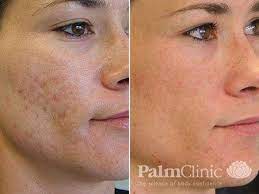Microneedling For Acne Scars - Abu Dhabi - Dubai
Microneedling is a cosmetic procedure that involves using a device with tiny, sterile needles to create small punctures in the skin. This process is also known as collagen induction therapy and is commonly used for various skin concerns, including acne scars.
When it comes to acne scars, microneedling can be an effective treatment option. Here's how it works:
- 1. Stimulation of collagen production: Microneedling stimulates the skin's natural healing response by causing controlled micro-injuries. These micro-injuries trigger the production of collagen and elastin, which are essential for healthy skin and can help improve the appearance of scars.
- 2. Breakdown of scar tissue: The micro-injuries created during microneedling promote the breakdown of scar tissue and encourage the formation of new, healthy skin cells. This process can lead to a smoother and more even skin texture.
- 3. Enhanced absorption of topical treatments: Microneedling creates micro-channels in the skin, which can increase the absorption of topical treatments. This means that any serums or creams applied during or after the procedure can penetrate deeper into the skin, maximizing their effectiveness in treating acne scars.
It's important to note that microneedling is typically performed by a trained dermatologist or aesthetician. They will use a device with fine needles that are adjusted to the appropriate depth for your specific skin concerns. The procedure can cause some discomfort, but a numbing cream is often applied beforehand to minimize any pain.
The number of sessions needed for optimal results can vary depending on the severity of the acne scars and individual factors. Typically, several treatments spaced about four to six weeks apart are recommended. However, it's best to consult with a skincare professional to determine the most suitable treatment plan for your specific needs.
While microneedling can be effective for acne scars, it's essential to have realistic expectations. Severe or deep scars may require additional treatments or a combination of therapies to achieve significant improvement. Your skincare professional can guide you on the best approach based on your unique situation.
It's also crucial to follow proper aftercare instructions provided by your skincare professional, as the skin will be more sensitive after microneedling. This may include avoiding direct sunlight, using gentle skincare products, and protecting the treated area with sunscreen.
Overall, microneedling can be a valuable treatment option for acne scars, but it's essential to consult with a qualified professional to determine the most appropriate course of action for your specific situation.

